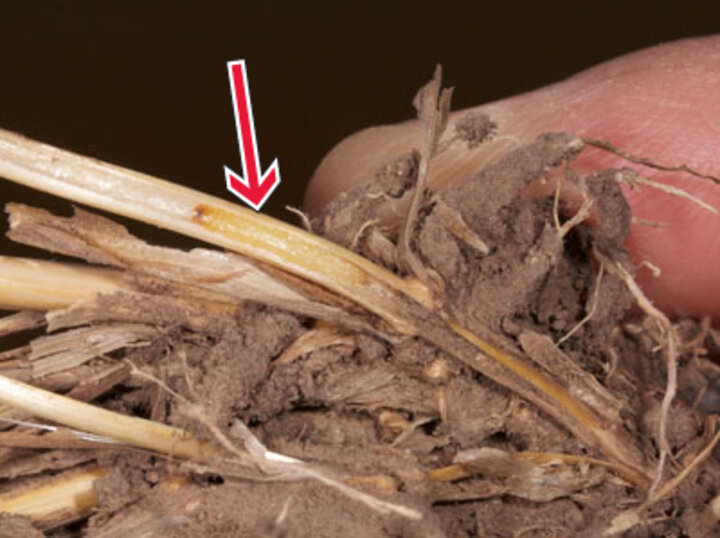July 11, 2012
|

Figure 1. Clockwise from top: Wheat stem sawfly feeding in a wheat stem; adult wheat stem sawfly; weakened wheat plants lodge, complicating a lower-than-normal wheat harvest in Nebraska's Panhandle. (Photos by Jeff Bradshaw)


|
Wheat producers in western Nebraska continue to report high levels of wheat lodging due (in part) to wheat stem sawfly. With harvest underway, they have been particularly struck with the amount of lodging along field borders. While many expected low yields due to a lack of moisture, the additional problems with lodging have only added to their concerns about this year's harvest.
During the past two weeks, I have received calls from wheat producers throughout the Panhandle indicating 50% or more wheat lodging with a concentration of lodging along crop borders. Although our survey results will not be compiled until late fall, it is pretty clear that we have had higher sawfly populations this year than have been recorded previously, perhaps ever in Nebraska.
Limiting Sawfly Problems in 2013
If this sawfly population trend continues, you may want to change your planting strategy this fall.
Consider planting at least one pass of hard-stem wheat along crop borders. These hard-stem wheat varieties will not have the same yield potential as hollow-stemmed varieties; however, they have the potential to act as a trap crop. Sawflies will still lay eggs in hard-stemmed wheat; however, the larvae will not complete development in these wheats. Thereby, the sawfly populations should be reduced in the adjacent hollow-stemmed wheat crop.
Jeff Bradshaw
Extension Entomologist, Panhandle REC
